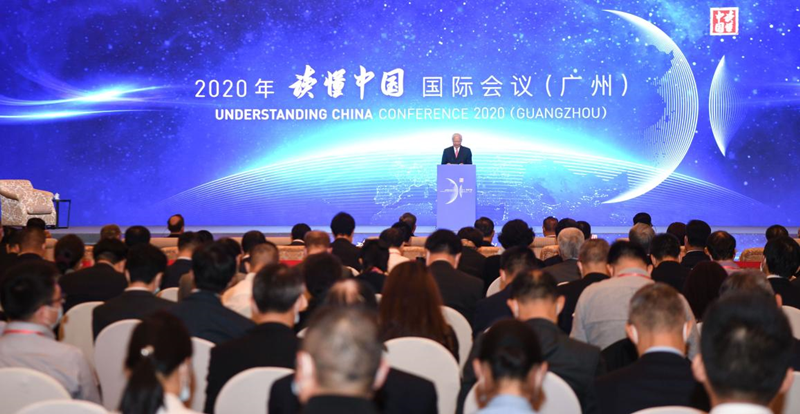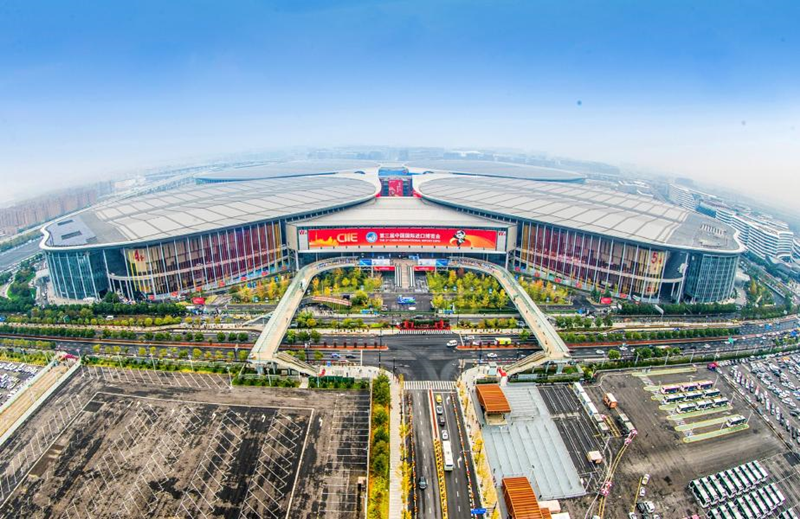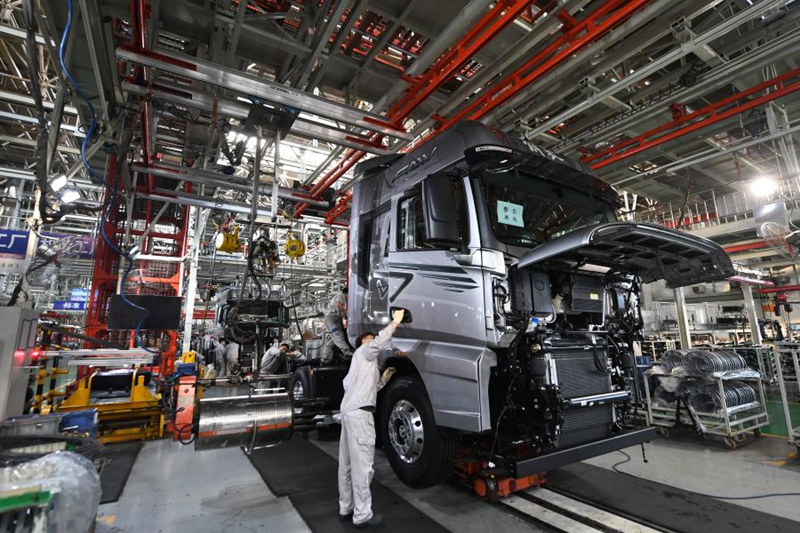China's new five-year plan to boost post-pandemic global recovery
- The leadership of the Communist Party of China (CPC) has adopted proposals for formulating the 14th Five-Year Plan (2021-2025) for National Economic and Social Development and the Long-Range Objectives Through the Year 2035.
- The new development plan proposals, which stress innovation, domestic demand, quality of development and high-level opening-up among others, will provide more development opportunities and bring shared prosperity to the world.
With the COVID-19 pandemic dealing a severe blow to the world economy, China is expected to play its role as a key engine to rekindle global growth in the future, global observers said.
The leadership of the Communist Party of China (CPC) has adopted proposals for formulating the 14th Five-Year Plan (2021-2025) for National Economic and Social Development and the Long-Range Objectives Through the Year 2035.
China's new development plan proposals, which stress innovation, domestic demand, quality of development and high-level opening-up among others, will provide more development opportunities and bring shared prosperity to the world, according to scholars and politicians at the Understanding China Conference which closed Sunday in Guangzhou.

Photo taken on Sept. 16, 2020 shows the night view of Shenzhen, south China's Guangdong Province. (Xinhua/Mao Siqian)
Opportunities from Higher-level opening up
The International Monetary Fund (IMF) projected the global economy will contract by 4.4 percent this year in its latest World Economic Outlook report released in October.
At the Understanding China Conference, Martin Jacques, a British scholar and political commentator, said the ongoing pandemic has a far bigger impact on the world than the 2008 financial crisis.

Participants attend the opening ceremony of the "Understanding China" conference held in Guangzhou, south China's Guangdong Province, Nov. 20, 2020. (Xinhua/Deng Hua)
The attendees of the conference also expressed concerns about the structural problems facing the world economy and the anti-globalization approach taken by some governments in the world.
In its development proposals, China highlights its wider and higher-level opening up, which is in contrast to the headwinds of protectionism and unilateralism.

Photo taken on Nov. 3, 2020 shows a view of the National Exhibition and Convention Center (Shanghai), the main venue of the third China International Import Expo (CIIE), in east China's Shanghai. (Photo by Wu Kai/Xinhua)
"As committed investors, we welcome China's ongoing policy of higher-level opening-up," said Merlin Swire, chairman of Swire Pacific Limited, citing the country's new foreign investment law which took effect on Jan. 1, and its negative list for foreign investment that is getting shorter, enabling greater access for foreign investment in a wider array of industries.
"Although the COVID-19 pandemic continues to pose serious challenges to the global economy, we have all witnessed China's resilience during these difficult times," he said, adding that as an engine for economic growth, China's post-epidemic recovery will be critical.
Yun Mingqing with the China Institute for Innovation and Development Strategy said multinational companies will gain more opportunities in China's higher-level opening up and that mutually beneficial cooperation should be strengthened to jointly create new technologies, new industries, and new forms of business.
Confidence and collaboration
The Chinese economy contracted 6.8 percent in the first quarter but increased by 3.2 percent in the second quarter and maintained a steady growth of 4.9 percent in the third quarter, showing a "V-shaped recovery." According to the IMF, China is expected to be the only major economy globally to see growth in 2020.

Workers assemble vehicles at a factory of the First Automotive Works (FAW) Group Co., Ltd. in Changchun, northeast China's Jilin Province, Sept. 23, 2020. (Xinhua/Zhang Nan)
China's manufacturing and service sector activities stood in expansion territory for eight straight months, the latest evidence that the economic recovery continued amid the government's pro-growth measures.
The extraordinary sales performance recorded during this year's Nov. 11 or Singles' Day shopping spree also indicated China's potential in consumption.

The giant screen shows sales on Alibaba's e-commerce platform Tmall between Nov. 1 and 12:30 a.m. on Nov. 11, in Hangzhou, east China's Zhejiang Province, Nov. 11, 2020. (Xinhua/Huang Zongzhi)
The Chinese authority has said China has effectively contained the virus and brought production and life back to normal, and the fundamentals sustaining the country's steady and long-term economic growth remain unchanged. China has full confidence and the ability to maintain stable economic performance.
The confidence is echoed by business circles who find massive opportunities in the country's new development paradigm.
Noted printer producer Jolimark is versed in manufacturing smart and high-quality machines, such as intelligent coffee art and nail art printers, aimed at middle-class consumers.
The company said it is greatly encouraged by China's efforts to expand domestic demand and tap the huge consumption potential of the middle-class.
In such a situation, Yohei Kono, President of the Japanese Association for the Promotion of International Trade, believed the two goals of "expanding domestic demand" and "innovating in science and technology" proposed in the communique of the Fifth Plenary Session of the 19th CPC Central Committee are most appropriate.
The Chinese government's policy of appropriately expanding domestic demand will not only address the imbalance of regional development but also ensure job opportunities for its citizens who are not subject to international uncertainties, he said at the Understanding China Conference via video link.
Writing by Liu Jie, Ma Xiaocheng, and Ye Ting; story also contributing by Li Laifang and Ma Xiaoran. Video by Huo Siying, Wang Ruiping, Ji Li, Zhao Yuchao, Han Chong and Pan Geping; video editing by Liu Yuting